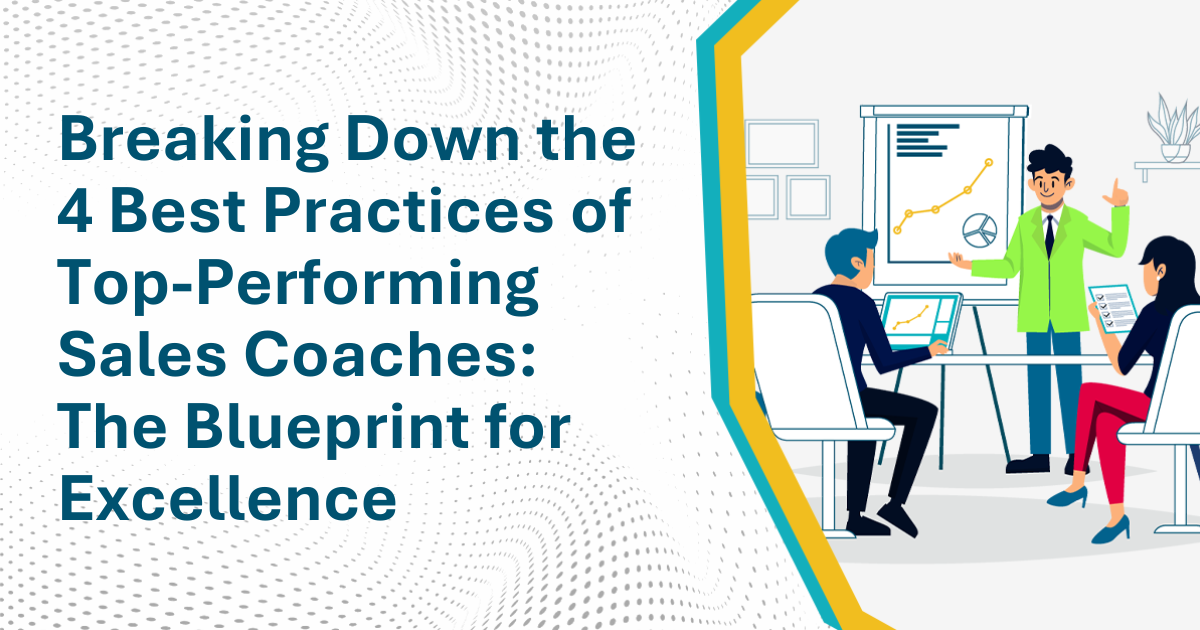In the dynamic world of pharmaceutical sales, certain sales coaches consistently produce outstanding results while others struggle to move the needle. Through extensive research and analysis of coaching behaviors across numerous pharmaceutical sales teams, we've identified four distinct practices that separate exceptional coaches from the rest. These aren't just good ideas—they're proven strategies backed by data and real-world success.
The Four Pillars of Coaching Excellence
1. Strategic Skill Alignment: The Foundation of Effective Coaching
Why It Works
-
Creates clear connection between daily activities and strategic objectives
-
Ensures development efforts drive business results
-
Maintains focus on high-impact skills and behaviors
-
Builds capabilities that directly influence market succes
Implementation in Practice
Top coaches excel by:
-
Mapping coaching objectives to strategic priorities
-
Creating clear links between skill development and business outcomes
-
Regularly reviewing and adjusting focus areas based on market dynamics
-
Measuring progress against both skill development and business metrics
Real-World Application
Consider a new product launch scenario:
-
Focus on value proposition articulation
-
Develop account penetration strategies
-
Enhance competitive differentiation skills
-
Build market access navigation capabilities
2. Momentum Through Skill Development Goals: The Power of Progressive Achievement
Short-Term vs. Long-Term Goals
-
Immediate skill application opportunities
-
Weekly or monthly achievement targets
-
Specific behavioral modifications
-
Quick wins to build confidence
-
Complex skill development paths
-
Career development objectives
-
Strategic capability building
-
Transformational behavioral change
The Implementation Framework
-
Assessment Phase
-
Identify current skill levels
-
Determine development priorities
-
Set baseline measurements
-
Define success criteria
-
-
Goal Setting
-
Create specific, measurable objectives
-
Define timeframes and milestones
-
Establish tracking mechanisms
-
Link goals to business outcomes
-
-
Execution Plan
-
Design practice opportunities
-
Schedule regular check-ins
-
Create accountability measures
-
Plan celebration of progress
-
3. The Continuous Engagement Model: Before, During, and After
Top coaches understand that effective coaching isn't an event—it's a process. They excel at creating a continuous loop of preparation, execution, and follow-through.
The Pre-Coaching Phase
-
Clear objective setting
-
Preparation guidelines
-
Expectations alignment
-
Resource identification
During the Coaching Moment
-
Active observation
-
Real-time feedback
-
Skill demonstration
-
Immediate application
Post-Coaching Follow-Through
-
Action item documentation
-
Progress tracking
-
Application support
-
Reinforcement planning
Making It Work
Successful implementation requires:
-
Structured communication protocols
-
Regular check-in schedules
-
Clear documentation processes
-
Feedback mechanisms
4. Creating the Coaching Biome: Beyond Individual Sessions
The concept of a "coaching biome" represents the most sophisticated level of coaching practice—creating an environment where development is constant and organic.
Elements of the Coaching Biome
-
Cultural Components
-
Learning mindset
-
Open feedback
-
Continuous improvement focus
-
Collaborative development
-
-
Structural Elements
-
Regular skill-building opportunities
-
Peer learning platforms
-
Digital coaching tools
-
Knowledge sharing systems
-
-
Process Integration
-
Embedded coaching moments
-
Team learning activities
-
Cross-functional development
-
Informal coaching opportunities
-
Building Your Coaching Biome
Steps to create a thriving coaching environment:
-
Assessment
-
Evaluate current culture
-
Identify gaps and opportunities
-
Map existing resources
-
Define desired state
-
-
Design
-
Create supporting structures
-
Develop necessary processes
-
Plan implementation phases
-
Set success metrics
-
-
Implementation
-
Phase rollout
-
Monitor adoption
-
Gather feedback
-
Adjust as needed
-
The Synergy Effect: When All Four Practices Come Together
-
Strategic alignment ensures focus on what matters
-
Goal setting creates clear direction and momentum
-
Continuous engagement maintains progress
-
The coaching biome sustains and amplifies developmen
Measuring Success: The Metrics That Matter
Top coaches track multiple dimensions of success.
-
Sales results
-
Market share growth
-
Customer engagement scores
-
Territory performance
Development Metrics
-
Skill progression
-
Behavior change
-
Knowledge application
-
Competency advancement
Program Metrics
-
Coaching frequency
-
Session effectiveness
-
Goal achievement
-
ROI measures
The Path to Coaching Excellence
Implementing these best practices requires:
1. Leadership Commitment
-
Resource allocation
-
Clear priorities
-
Visible support
-
Accountability measures
2. Systematic Approach
-
Structured implementation
-
Regular assessment
-
Continuous improvement
-
Clear metrics
3. Cultural Integration
-
Values alignment
-
Behavioral expectations
-
Recognition systems
-
Success celebration
Conclusion: Your Blueprint for Coaching Success
-
Accelerate sales performance
-
Enhance team capabilities
-
Improve market results
-
Create sustainable competitive advantage
The question isn't whether these practices work—the evidence is clear. The question is: How will you implement them to transform your sales coaching and drive exceptional results?
Your journey to coaching excellence starts with a single step. Which of these practices will you implement first?



